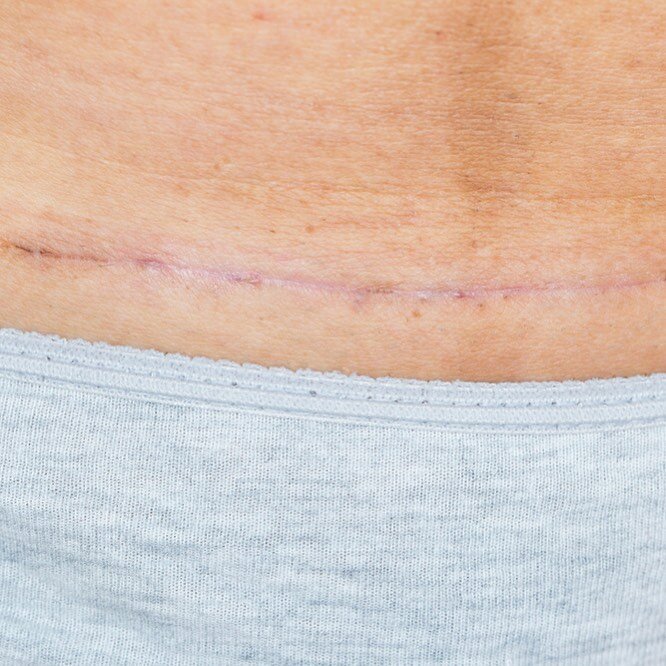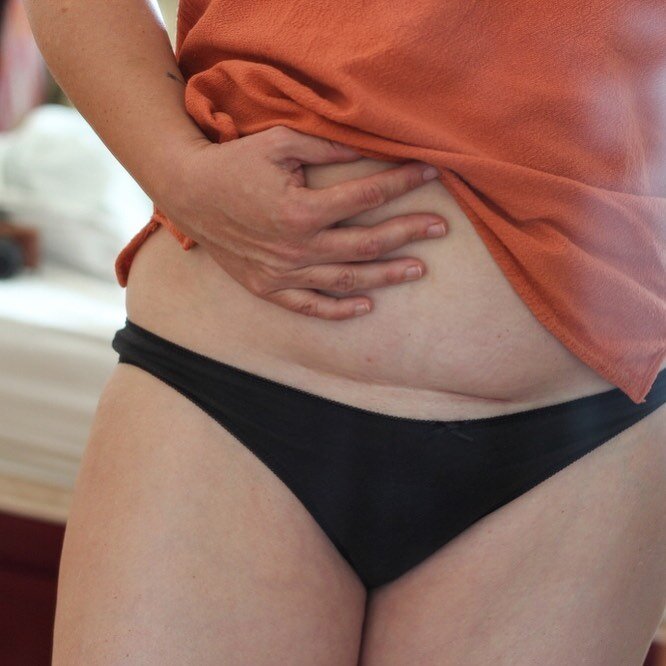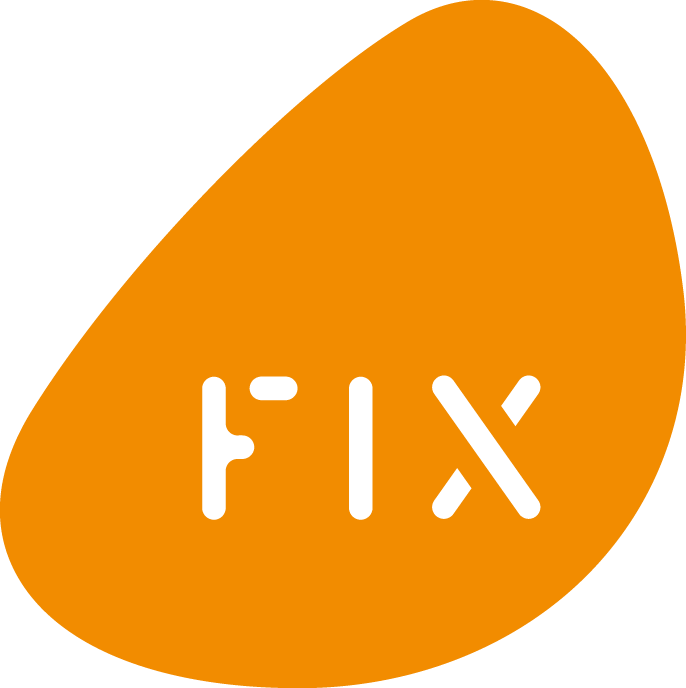FIX WOMEN’S HEALTH PHYSIOTHERAPIST, NIAMH BURN ASKS FIX MASSAGE THERAPIST, CÉCILE DUMONT A FEW QUESTIONS ON C-SECTION SCARS AND HOW WOMEN CAN PRACTICE SELF-MASSAGE TO HELP THE HEALING PROCESS.
WHAT SHOULD A SCAR FEEL LIKE SEVERAL WEEKS AFTER A C SECTION?
The time it takes for a C section scar to heal varies from woman to woman. The healing process can last anything between 6 weeks to 3 months and in this time you’re likely to experience all kinds of sensations. Sore and bruised for a few days or weeks, it might also come with itchiness, numbness, tingling, a sensation of restriction or pull. It isn’t unusual for the numbness to last a few months depending on the type of C section technique the surgeon used. Some scars are quite flat, some are a little raised. It might feel lumpy, hard or solid. Each will be different. Most C section scars eventually heal into a faint line just above the pubic hairline.
Please note that in the first few weeks, you should contact your midwife or GP straight away if you develop a high temperature, if your wound becomes red, swollen, painful or has a discharge, or if you feel generally unwell (presenting an upset stomach for example).
—
WHAT CAN I DO TO MY SCAR TO ALLOW IT TO BE OPTIMUM?
I highly recommend practising gentle self-massage. Some scar tissues can be treated as early as 2 hours after the event, some require a couple of years before they can be released, but all scars can be worked on at some point, even at many later stages in life. The sooner you start, the better. In the case of a C section scar, the NHS guideline is 6 weeks to 3 months. However, we can start releasing AROUND the scar sooner than that to make room for healing. Before doing any work directly to the scar itself, check in with yourself – are you comfortable placing your hand on your scar? Do you feel ready for this type of work? If not, no worries, wait until you do.
The expression Listening Touch (familiar to all bodyworkers) applies particularly well to the sensitive and delicate nature of scar tissue release – the skin is the interface between our physical self and our environment but it is also an interface between our emotional self and our surroundings. Different C section scars will come with different stories and each mother will have their own unique relationship to their scar. Myofascial Release (MFR) is the best approach to adopt for scars and you can practice its basic principles yourself.
When releasing scar tissues – as with all types of bodywork – it is essential to work with kindness, gentleness and patience. Your body has been through a trauma and this experience will have left traces whether you are conscious of it or not. We don’t want you to take your body through any of it again so it is essential for you to be listening with your fingers and hands, working gently, and discovering as you go how to best bring release and relief. You can even start over clothes if you prefer. Good myofascial work is less about the technique and more about the ability for you to tune into your own body and listen through your hands.
In the acute phase of the scarring process (when the scar is still inflamed, red and not healed/sealed), broad and gentle techniques can be used around the site to reduce oedema. Past this acute stage, fascial techniques can progressively be introduced across the scar itself to great results.
Here a few suggestions of what you can do to help your scar to heal. The timeframe is given as an indication – don’t rush into anything you don’t feel comfortable with. Listen to your body and what feels okay.

—
IN THE FIRST 6 WEEKS :
-Lying on your back with your knees bent or resting on a pillow or two, gently place one hand on your lower belly above your scar. Allow yourself to soften and tune into your breathing. There is nothing for you to do but relax and progressively let your hand sink in through the superficial layers of skin. You can place your other hand at the top of your thigh or anywhere below the scar that feels comfortable and practical.
After a couple of minutes, you might feel tissues wanting to move (it is likely to be very subtle) – you might notice your hand getting deeper or moving in a direction or another. Just follow the tissues – do not resist or force anything.
It might be that you do not feel anything at all for a while and that is absolutely okay. Keep at it. It might take a few days for you to develop a sense of connection. When it comes to scar release, less is more – relax, soften, trust. Even just letting your hand sink in will have an impact on the fascial network.
I’d recommend doing this daily (once or more depending on how uncomfortable your scar feels) for 5 minutes minimum as myofascial release requires time. These solidified restrictions need time before they can ‘melt’ back to a more fluid state (see below for more details).
FROM 6 WEEKS ONWARDS:
-Start with the exercise detailed above. When you feel you’ve established a good connection with yourself and your tissues, you can place your fingertips just above and below the scar and sink in for a couple of minutes. You can progressively add a few gentle movements, whether it is little circles or tiny sideways strokes. Another good approach for this is to cross your fingers over the scar – you can use your index fingers only if it feels easier.
When you feel ready to work on the scar itself – and only when you feel ready – you can gently place the fingertips of both hands all along the scar and again sink in gently for a couple of minutes. You might notice, as already mentioned, the tissues subtly wanting to move one way or another or more deeply, just follow them where they want to go.
It is also possible to apply gentle strokes across the scar – you can hold the skin on the lower side of it with your index fingertip and use the other index fingertip to gently brush over the scar towards your belly button in tiny J shaped strokes. Repeat and work the whole length of the scar going across it.
Another stroke you can practice is torquing – gather the tissues all-around your scar in a little ‘sausage’ and move it very gently. You can either roll the skin ‘sausage’ over the scar or move each side of it in opposite directions to move the scar tissues. If your scar ‘escapes’ you, don’t give up on it – play around and find ways to engage it gently or go back to some of the more basic techniques described above.
—

WHAT IS MYOFASCIAL RELEASE (MFR)?
Myofascial Release is a form of bodywork where the therapist doesn’t impose anything on the body but acts as a facilitator for the tissues to release themselves – through gentle, sustained and non-invasive pressure into the tissues, the fascia progressively releases itself and the tissues regain more mobility, a phenomenon often accompanied by lesser pain, an improved range of movement and a deep sensation of relaxation. Fascia – picture an extraordinarily intricate 3D bodysuit of webbed connective tissue – is composed of elastin, collagen and grounding substance (which is mostly water). It connects and interpenetrates every structure in the human body – muscles, nerves and blood vessels, organs, the brain and the spinal cord, bones. Normally fluid and elastic, it solidifies when any trauma (surgery, disease, inflammation, accident, shock, etc) occurs, which then impacts the whole body due to its interconnected nature. MFR allows it to ‘melt’ it back from gel-like and restricted to its more fluid and elastic state. It is practised without any oil or wax, most of the time directly skin on skin. The recipient is invited to use their breathing and intuitive focus to soften and connect with their body and its pain patterns.
—
WHY IS IT USEFUL FOR SCAR TISSUE?
To quote John Barnes, a body worker and one of the fathers of MFR, « A scar is the tip of a fascial iceberg. » When the skin and the tissues it protects (muscles, tendons, ligaments, fascia and nerves) get damaged – in the case of a C section, through surgery – the primary bodily response is an inflammatory process triggering the formation of a scar, both of which are necessary for healing. Also referred to as scar tissue or cicatrix, a scar is the development of collagen fibres at the site of an injury to mend the damaged tissues. It is the physical embodiment of human resilience and a pretty extraordinary and beautiful process when you think of it. There exist different types of scars based on their cause, nature and where they are in the body, but what they all have in common is that they won’t be as strong as the tissues they were created to replace, thus often creating limitations in movements, local restrictions and discomfort or pain. Myofascial Release by restoring the fascial network to its fluid nature helps scar tissues to regain more mobility therefore easing off restrictions and pain, bringing greater comfort and limiting long-term negative impact on the rest of the body (we now know that a C section scar left to heal without any release can later provoke hip or back pain and pelvic floor dysfunctions amongst other issues).
